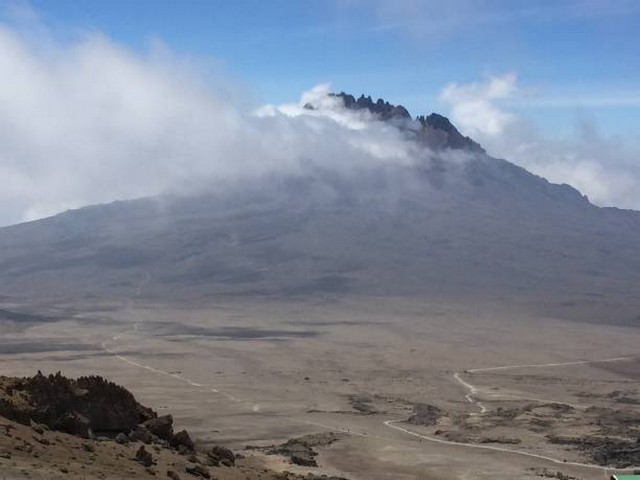Family Kilimanjaro Trek Tips For Beginners
Introduction: Embrace the Majestic Mount Kilimanjaro as a Family
Imagine standing atop Africa’s highest peak, surrounded by vast clouds and the golden sunrise, with your loved ones by your side. Trekking Mount Kilimanjaro is not just an adventure; it’s a profound family experience, bonding over shared challenges and triumphs. At the Kilimanjaro Centre for Trekking and Ecotourism (KCTE), we understand that planning a family trek can be daunting, especially for beginners. This blog post is crafted to guide you through essential tips to ensure your journey is memorable and safe. Let’s make your family’s journey to the roof of Africa a story worth telling for generations!
Why Choose Kilimanjaro for Your Family Adventure?
Mount Kilimanjaro, standing proudly at 5,895 meters (19,341 feet), is one of the world’s most accessible high summits. A trek to its peak does not require technical climbing skills, making it a fantastic option for families, including children who are adventurous and fit. The journey through five distinct ecological zones – from rainforest to arctic – offers a spectacular educational experience for all ages, teaching valuable lessons on geography, biology, and the importance of nature conservation.
Preparing for Your Trek: A Family Guide
Health and Fitness First
Begin with ensuring that all family members are physically prepared for the adventure. Although Kilimanjaro is climbable without technical skills, it demands good physical condition. Engage in regular family walks, gradually increasing in duration and difficulty, to simulate the trekking experience.
Choosing the Right Route
Kilimanjaro offers several routes, each with unique advantages. For families, the Marangu or Machame routes are often recommended. These routes offer a gentler ascent and better acclimatization options, crucial for young climbers. At KCTE, we can help you select the route that best suits your family’s needs and preferences.
Packing Essentials
Packing wisely can make a significant difference. Essentials include:
- Proper Footwear: Durable, waterproof hiking boots are a must.
- Layered Clothing: Prepare for all weathers from hot days to freezing nights.
- Sun Protection: Sunglasses, hat, and sunscreen are crucial to protect against the strong UV rays.
- Hydration Packs: Each member should have a hydration pack or water bottle.
For a comprehensive packing list, consult with our experts at KCTE. We ensure you have everything needed for a safe and comfortable trek.
On the Mountain: Safety and Enjoyment
Maintaining a Healthy Pace
One of the golden rules of mountaineering is to ‘pole pole’ (slowly, slowly in Swahili). Keeping a slow, steady pace is vital, especially for children, to avoid exhaustion and altitude sickness.
Hydration and Nutrition
Ensure constant hydration and consume energy-rich foods. Our KCTE guides are experienced in preparing and providing meals that meet the nutritional demands of a high-altitude trek.
Engage with the Environment
Turn the trek into an interactive experience. Encourage kids to journal or photograph. This not only keeps them engaged but also enriches the educational aspect of the trek.
Making Memories: Capture and Share the Journey
Documenting the journey through photos, videos, or even simple diary entries can help in capturing memories that your family will cherish forever. At KCTE, we understand the importance of these memories, hence we provide customized photo packages that capture professional photos at key milestones along your trek.
Environmental Considerations: Trek Responsibly
Teach your family the principles of Leave No Trace to preserve the beauty of Kilimanjaro for future generations. This includes carrying out all litter, respecting wildlife, and sticking to trails.
After the Summit: Celebrating and Reflecting
Reaching the summit is a monumental achievement for any climber, especially for a family. Celebrate this victory with a special meal or a small ceremony. Reflect on the journey and discuss what everyone learned and enjoyed most. These reflections can strengthen family bonds and encourage a lifelong appreciation for adventure and nature.
Why Book Your Family Trek with KCTE?
Choosing the right tour operator is crucial for a successful and safe Kilimanjaro trek. At Kilimanjaro Centre for Trekking and Ecotourism (KCTE), we offer:
- Family-friendly itineraries tailored to the needs of children and adults.
- Experienced, English-speaking guides who are trained in first aid and altitude sickness prevention.
- Safety-first protocols including regular health checks throughout the trek.
Booking with KCTE ensures a hassle-free, enriching, and memorable adventure for your family.
FAQ – Family Kilimanjaro Trek Tips For Beginners
Q1: What is the minimum age for children climbing Kilimanjaro?
A1: The recommended minimum age is 10 years old, but it depends on the child’s physical condition and previous hiking experience.
Q2: How long does the trek take?
A2: Depending on the chosen route, treks can take between 5 to 8 days.
Q3: What is the best time of year to climb Kilimanjaro with a family?
A3: The best times are during the dry seasons, from January to mid-March and from June to October.
Q4: Are there special considerations for altitude sickness for children?
A4: Children can be more resilient but also less likely to report symptoms. It’s crucial to monitor their well-being closely and ascend gradually.
Conclusion: Your Family’s Gateway to Adventure
Climbing Kilimanjaro is more than just a trek; it’s a transformative journey that can teach resilience, respect for nature, and the value of achievement. With the right preparation, a positive attitude, and the support of experienced guides from Kilimanjaro Centre for Trekking and Ecotourism (KCTE), your family can enjoy a safe and unforgettable adventure. Are you ready to create lifelong memories? Book your family’s Kilimanjaro trek with KCTE today and step into the adventure that awaits!




